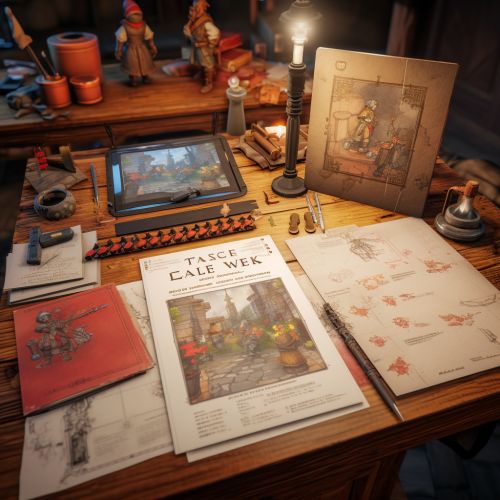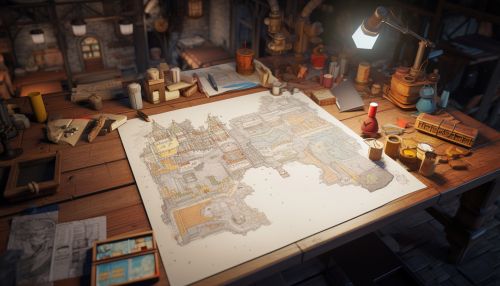Game design document
Overview
A game design document (GDD) is a highly descriptive and comprehensive document that serves as an essential blueprint in game development. It outlines the game's overarching design, including its storyline, characters, gameplay mechanics, art and audio direction, and more. A GDD is the primary reference point for the development team and helps ensure everyone is working towards the same vision.
Purpose and Importance
The primary purpose of a GDD is to articulate the game designer's vision in a manner that is clear, detailed, and accessible to all members of a development team. It serves as a reference document that guides the team throughout the development process. The GDD ensures that all team members, from programmers and artists to sound designers and testers, understand the game's design and their role in bringing it to life.


Components of a Game Design Document
A comprehensive GDD typically includes the following sections:
Game Overview
This section provides a high-level view of the game, including its genre, platform, and target audience. It also includes the game's unique selling points and its core gameplay loop.
Story and Characters
This section details the game's narrative, including the plot, setting, and characters. It also outlines the character progression and relationships between characters.
Gameplay Mechanics
This section describes the rules of the game, player goals, and the challenges players will face. It also includes details on controls, game progression, level design, and the reward system.
Art and Audio
This section outlines the visual style and sound design of the game. It includes details on the game's art direction, character and environment design, and the audio effects and music.
Technical Specifications
This section outlines the technical requirements of the game, including the game engine, platform specifications, and hardware requirements. It also includes information on the game's programming and software needs.
Creation and Evolution of a Game Design Document
Creating a GDD is a dynamic process that evolves throughout the game development cycle. It begins with a concept or idea, which is then fleshed out into a full-fledged document. As the development progresses, the GDD is updated and revised to reflect changes in the design, feedback from playtesting, and technical constraints.
Initial Concept
The GDD begins with a game concept, which can be as simple as a basic idea or as complex as a detailed vision for the game. This concept is then expanded upon in the GDD.
Fleshing Out the Document
Once the initial concept is established, the game designer begins to flesh out the GDD. This involves detailing the game's mechanics, story, characters, art and audio direction, and technical specifications.
Iteration and Revision
As the game development progresses, the GDD is continually updated and revised. This can be due to feedback from playtesting, changes in the game's design, or technical constraints. The GDD is a living document that evolves alongside the game.
Role in the Game Development Process
The GDD plays a crucial role in the game development process. It serves as a roadmap for the development team, providing a clear vision of the game's design and ensuring that all team members are on the same page. By clearly outlining the game's design, the GDD helps to prevent misunderstandings and miscommunications that can lead to development delays and cost overruns.
Challenges and Criticisms
While the GDD is a valuable tool in game development, it is not without its challenges and criticisms. Some argue that the process of creating a GDD can be time-consuming and may stifle creativity. Others argue that a GDD can become obsolete quickly in agile development environments, where rapid iteration and flexibility are key.
Despite these criticisms, the GDD remains a widely used tool in game development. It provides a solid foundation for the development team and helps ensure that the final game aligns with the designer's vision.
See Also
Game Development Game Mechanics Game Narrative Game Art Game Audio Game Engine
